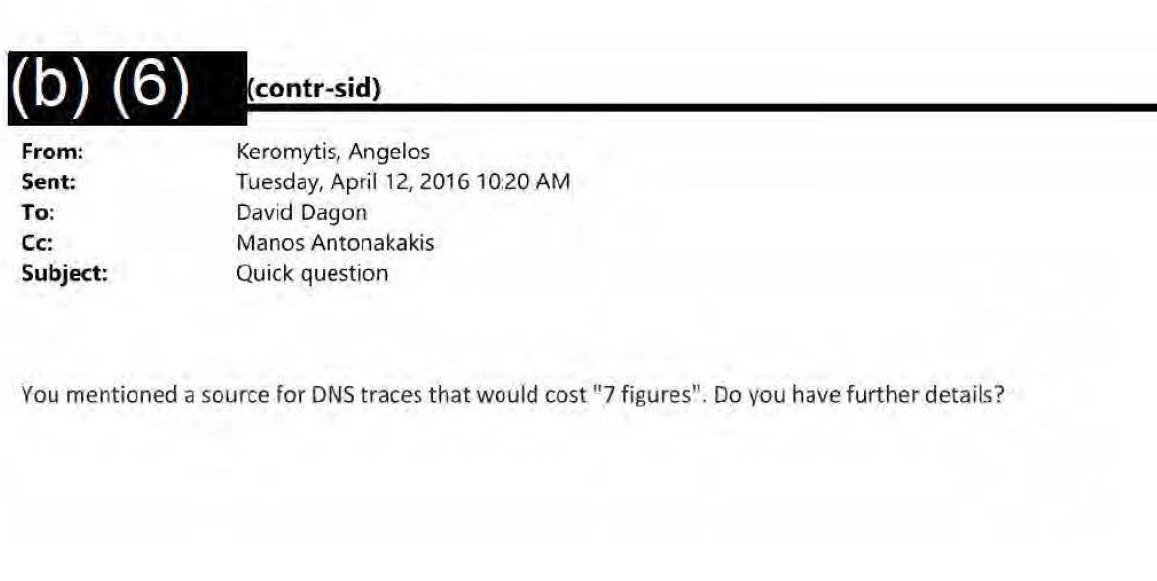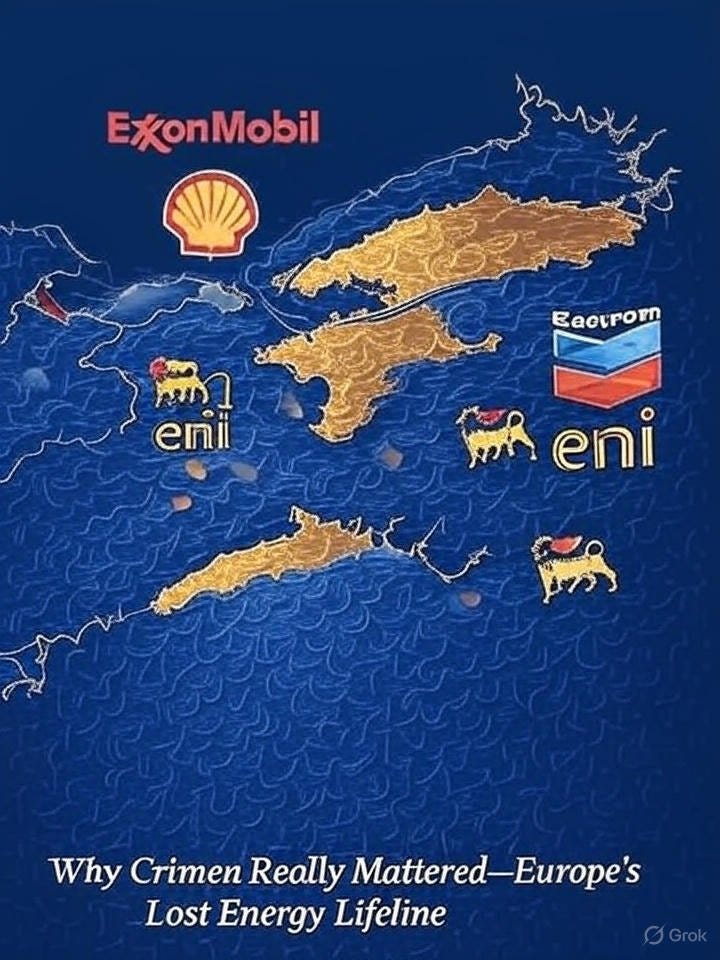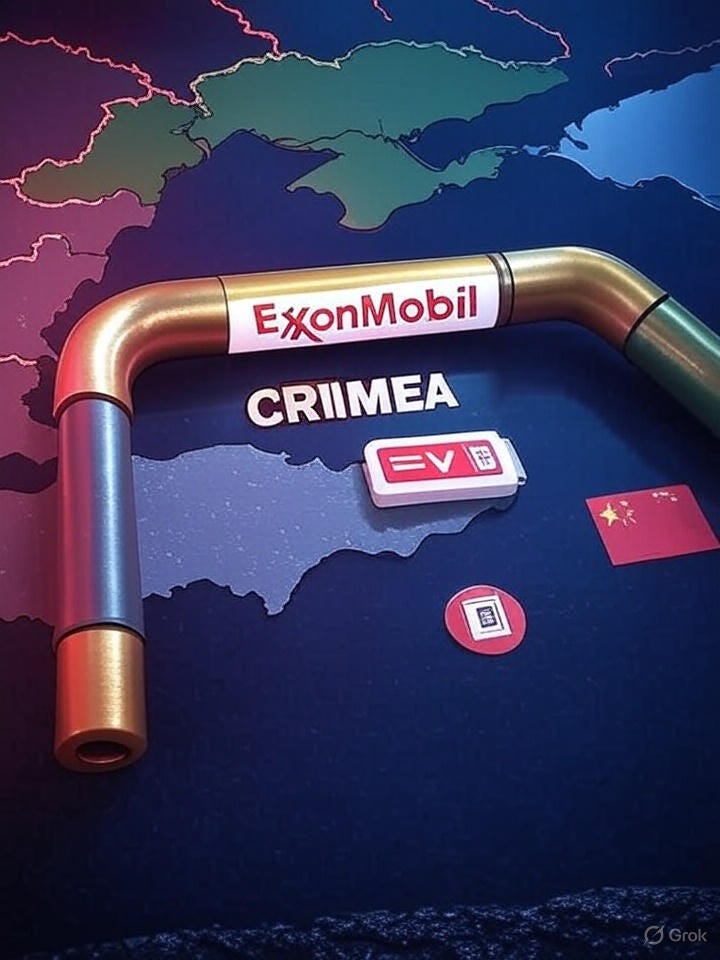Russiagate Unraveled: A Multi-Factional Conspiracy from Within
JULY 10, 2025
Russiagate Unraveled: A Multi-Factional Conspiracy from Within
The Russiagate saga began in April 2014, when NATO’s Civil Emergency Planning Team visited Kyiv to advise on protecting Ukraine’s critical energy infrastructure, coinciding with a clandestine visit from then-CIA Director John Brennan. This convergence, set against Russia’s annexation of Crimea, marked the genesis of a multi-factional operation driven by overlapping agendas within the U.S. and Western security state. Far from a Russian-orchestrated scheme, it was a domestic power play, engineered in Washington, D.C., and Brussels, to protect entrenched interests and neutralize a wildcard threat: Donald Trump. To understand how it unfolded, we must trace the machinery back to this pivotal moment, dissecting each faction’s role and exposing the motives—power, money, and control—that fueled the most coordinated disinformation campaign in modern American history.
The Ukraine-NATO-CIA Axis: Engineering a Cyber Pretext
The Ukraine-NATO-CIA axis, born in that April 2014 meeting, operated through Brussels, Langley, and Kyiv, with strategic guidance from NATO’s hybrid warfare command and covert support from the CIA. Their goal was to manufacture a pretext for deepened NATO engagement and legal justification for expanded cyber warfare posture under Article V. Russia’s annexation of Crimea provided the perfect catalyst, prompting NATO’s deployment of cybersecurity and hybrid warfare specialists to Ukraine under the “Resilience” doctrine. Brennan’s presence aligned with this effort, laying the groundwork for a U.S.-NATO intelligence fusion that created Guccifer 2.0—a fabricated persona designed to simulate Russian involvement and obscure the true origin of data exfiltrations.
Their strategy was technical and deceptive, designed to simulate a Russian cyber offensive that could justify an invasion. Under NATO doctrine, a cyberattack can be treated as an act of war, invoking Article V and enabling a full-scale response under collective defense. To create this digital villain, they engineered a series of coordinated elements: DCLeaks, WikiLeaks, and the Trump-Alfa Bank server hoax. These were not isolated incidents but carefully constructed components of a larger operation. The so-called “DNC hack” was staged, with leaked emails selectively curated and released to frame the Kremlin.
The infrastructure was sophisticated. Metadata manipulation, DNS telemetry forgery, and fabricated personas like Guccifer 2.0—complete with time-stamped Word documents and fake Russian markers that crumbled under scrutiny—provided narrative coherence. The Trump-Alfa Bank server story, built on spoofed traffic patterns and misrepresented DNS queries, implied secret communications but relied on manufactured attribution. The DNS records, reportedly costing over a million dollars, weren’t expensive due to their size but because of their specialty. Simulating Russian military traffic—possibly using GRU IP space or defense ministry blocks—required seven-figure investment to show persistent connections to Trump Tower, the DNC, and Alfa Bank. This wasn’t forensic work; it was narrative engineering.
To make the cyber-illusion credible, fabricated DNS telemetry was paired with real digital assets, like email headers. Yared Tamene, the DNC’s internal IT liaison and Obama-affiliated cybersecurity contact, sent a 15GB cache of DNC metadata—headers only, no content—to FBI Special Agent Hawkins before any official breach announcement. This isn’t how you investigate a hack; it’s how you seed plausible evidence for a pre-decided story. DCLeaks served as a holding bin, while WikiLeaks was weaponized to lend authenticity. The operation’s success hinged on no one connecting the dots—or daring to challenge them. Notably, neither CrowdStrike nor the DOJ ever denied a connection between the DNS data and the WikiLeaks email archive. Why? Because the metadata, DNS trails, and server headers were interwoven by design, reverse-engineered to support the chosen outcome. There was no DNC hack, only a metadata war disguised as cybercrime.
The FBI’s Political Risk Management: The Steele Dossier Gambit
While the CIA faction focused on global strategy, the FBI played a domestic game, managing political risk within the Beltway. In 2016, the assumption was near-universal: Hillary Clinton would win the presidency. Certain actors within the FBI, aware of Clinton’s vulnerabilities, saw an opportunity to secure leverage over her post-election. Their tool was the Steele dossier, a lurid, unverified collection of allegations about Trump’s ties to Russia, funded through Clinton campaign proxies like Fusion GPS and Perkins Coie.
The dossier’s veracity was irrelevant—its purpose was entrapment. By funneling it into the political ecosystem, the FBI ensured Clinton’s campaign would commit felonies: illicit funding, distribution of classified information under false pretenses, and misuse of the dossier to justify FISA surveillance warrants against Trump associates like Carter Page. Once implicated, Clinton would be beholden to the Bureau, her presidency manageable. The FBI’s play wasn’t primarily about stopping Trump—it was about ensuring Clinton remained on a leash. When Trump unexpectedly won, the dossier pivoted to a new role: a weapon to delegitimize his presidency and fuel the Russiagate narrative.
The McCain–Graham Defense Kleptocrats: Reviving the Cold War Economy
A third faction, led by senators like John McCain and Lindsey Graham, operated with a simpler motive: profit. These defense kleptocrats cared little about Clinton’s political fate or the DNC’s dramas—they saw Russiagate as a golden opportunity to reignite the Cold War arms economy. A heightened Russian “threat” justified billions in weapons contracts, defense budgets, and intelligence funding, funneled through NATO, the Pentagon, and cyber-command structures.
The Steele dossier and the broader Russian interference narrative were convenient tools for their agenda. By amplifying fears of Kremlin aggression, McCain and Graham secured bipartisan support for massive defense appropriations, including $350 million in military aid to Ukraine in 2016 alone. Their advocacy wasn’t ideological but transactional, rooted in the Beltway’s revolving door between Congress, defense contractors, and think tanks. Russiagate’s specter of Russian cyberattacks and election meddling provided the perfect cover to shovel money into the military-industrial complex, ensuring a steady flow of contracts for Lockheed Martin, Raytheon, and other defense giants.
The Corrupt Politician Class: Covering a Shadow Economy
The final faction was the corrupt politician class—Clinton, Obama, Biden, and their oligarch intermediaries. For decades, these figures exploited post-Soviet chaos, using Ukraine as a hub for money laundering and influence peddling. Through entities like Burisma, where Hunter Biden sat on the board, and a web of private equity vehicles, they siphoned billions under the guise of “democracy assistance.” Russia, under Putin, began clamping down on these schemes, while Trump’s outsider status and skepticism of NATO posed an existential threat to their shadow economy.
Russiagate was their defense mechanism—a preemptive smear campaign to discredit Trump and deflect scrutiny from their own malfeasance. By framing any investigation into Ukraine, the Bidens, or DNC corruption as “Russian disinformation,” they created a radioactive narrative shield. The DNC’s refusal to allow FBI access to its servers, coupled with CrowdStrike’s questionable attribution of the hack to Russia, underscored their determination to control the story. For this faction, Russiagate wasn’t just about power—it was about survival, protecting a lucrative racket that thrived in the shadows of U.S. foreign policy.
Convergence and Consequences: A Unified Smokescreen
Each faction had distinct endgames—cyber dominance, political leverage, defense profits, or corruption cover—but they converged on a singular imperative: Trump could not be allowed to govern independently. Russiagate became their insurance policy, a narrative weapon to destabilize his presidency and protect their interests. The operation’s brilliance lay in its decentralization: no broad coordination was needed, as each group acted out of self-interest, falling into a trap set by others. At the heart of this setup were CIA Director John Brennan and FBI Director James Comey, who architected the conspiracy by planting the Steele dossier, fabricating cyber evidence like the DNC hack and Trump-Alfa server hoax, and leveraging their agencies to seed a Russia threat narrative starting in April 2014. Their collaboration provided the initial spark, manipulating metadata and intelligence channels to draw the factions into a self-reinforcing web, each amplifying the story for their own gain.
The consequences were profound. Russiagate paralyzed U.S. governance, eroded public trust in institutions, and poisoned discourse for years. It justified sweeping surveillance expansions, enriched defense contractors, and shielded corrupt elites from accountability. Yet it failed to achieve its ultimate aim—Trump’s removal—exposing the limits of even the most sophisticated disinformation campaigns. When the operation concluded, its architects retreated into silence, their lips sealed, leaving a fractured nation to grapple with the fallout.
Conclusion: The Real Disinformation Campaign
Russiagate wasn’t a Russian plot—it was a domestic conspiracy, orchestrated by Washington’s most powerful players. The Ukraine-NATO-CIA axis, the FBI, defense kleptocrats, and corrupt politicians wove a narrative so compelling it captivated the nation, yet so fragile it unraveled under scrutiny. Their operation wasn’t just about stopping Trump—it was about preserving a system where power, money, and control remain unchallenged. Understanding Russiagate means recognizing it for what it was: not a defense of democracy, but a betrayal of it, run not from Moscow, but from the heart of the American security state.
📌 Why Crimea Matters: The Hidden Energy War in the Black Sea
Crimea is more than a geopolitical fault line—it’s a critical node in Europe’s energy survival strategy, one that was quietly shattered in 2014. Beneath the Black Sea and the Crimean shelf lie massive untapped reserves of natural gas, many of which were under contract with Western majors like ExxonMobil, Shell, and Chevron before Russia’s annexation. These reserves weren’t just economic opportunities—they were the cornerstone of the EU’s energy diversification plan, intended to reduce dependence on Russian gas.
When Russia seized Crimea, it cut off the EU’s access to its own energy hedge. The Skifska and Foros offshore fields, the Olesska shale, and other Black Sea tracts—some holding over 200–250 billion cubic meters of gas—were immediately nationalized or militarized by Moscow. Ukraine lost 80% of its offshore energy potential overnight. And so did Europe.
This wasn’t just a territorial loss—it was an energy decapitation strike. Brussels had backed Kyiv’s post-Maidan government with the explicit understanding that Ukraine’s offshore and shale resources would be tapped as part of a new “southern energy corridor”—a Plan B to counterbalance Gazprom. That entire strategy collapsed when Crimea fell.
The EU was forced to abandon its own long-term energy autonomy plans and revert back to increased Russian gas imports, particularly via Nord Stream. The energy leverage shifted dramatically in Moscow’s favor, and Putin knew it. Crimea became not just a fortress, but a chokepoint—a maritime launchpad from which Russia could both deny the West new supply and enforce its own pricing power.
This is why NATO’s response wasn’t just about defending Ukraine’s sovereignty—it was about protecting the EU’s energy lifeline. The annexation of Crimea wasn’t simply a land grab—it was a strategic seizure of Europe’s future gas reserves, one that forced the continent deeper into dependency just as it was trying to escape it.
In hindsight, the West didn’t just lose Crimea—they lost Europe’s last best shot at energy independence from Russia.
📌 Sidebar: Why Crimea Really Mattered—Europe’s Lost Energy Lifeline
When Russia annexed Crimea in 2014, the headlines focused on ethnic tensions and NATO encroachment. But beneath the surface, the real war was over natural gas—and Europe lost.
Crimea’s offshore shelf and Black Sea Exclusive Economic Zone (EEZ) hold an estimated 250–300 billion cubic meters of natural gas, much of it under exploration agreements with ExxonMobil, Shell, Chevron, and Eni. These weren’t just commercial ventures—they were part of the EU’s master plan to diversify away from Russian gas dependency.
By taking Crimea, Russia seized 80% of Ukraine’s offshore oil and gas assets, including the Skifska field, once projected to feed into Europe’s southern corridor strategy. The EU’s dream of an independent supply pipeline—free from Gazprom’s grip—was extinguished overnight.
Brussels had been quietly building an energy buffer with Kyiv's help. Crimea was to be the crown jewel in this effort—a launchpad for Black Sea extraction that would reroute billions of cubic meters of gas through Western-aligned infrastructure. The Skifska, Foros, and Olesska fields were central to this plan. With Crimea under Russian control, those fields were militarized, exploration was halted, and Europe was forced back into Gazprom’s orbit.
The annexation wasn’t just territorial—it was a strategic strike on the EU’s future energy independence. Within two years, Europe’s Russian gas dependency actually increased, and the justification for Nord Stream 2 gained steam. In a cruel twist, the very event that was supposed to isolate Russia—Crimea’s seizure—strengthened Moscow’s energy dominance over Europe.
That’s the part NATO never said out loud: Crimea was about energy control. And the West lost more than a peninsula—they lost the leverage to stand up to Russia without freezing in the dark.
💬 The Fossil Fuel Lie: Biden’s Green Rhetoric vs. Black Sea Reality
When President Biden stood before the world declaring that “fossil fuels are an existential threat to humanity,” he wasn’t sounding the alarm on climate change—he was masking a geopolitical collapse. After Russia seized Crimea and stripped Europe of its planned offshore gas lifeline, the West needed a new narrative. Biden, alongside EU leaders, shifted overnight from gas diplomacy to green evangelism—not because fossil fuels were evil, but because they had lost access to them. This pivot had nothing to do with environmental salvation and everything to do with salvaging geopolitical credibility. The loss of Crimea’s Black Sea gas reserves—estimated between 250 and 300 billion cubic meters—left the EU scrambling, exposed, and desperate for an off-ramp.
In practice, Biden and his globalist counterparts simply traded one dependency for another. Cut off from Russia, the West turned to China, aligning its “clean energy transition” with Chinese-controlled lithium, cobalt, nickel, and rare earth metals. Under the pretext of climate urgency, Europe tethered its future to Beijing’s supply chains while vilifying its own energy producers. It was a pivot cloaked in morality but driven by fear—a quiet retreat wrapped in ESG language. The goal wasn’t to decarbonize; it was to avoid crawling back to Moscow for gas.
Domestically, Biden dismantled U.S. energy sovereignty with the stroke of a pen—killing Keystone, choking off federal leases, and flooding the market with subsidies for EVs, solar panels, and batteries—all of which require components sourced, refined, or controlled by China. The administration wasn’t decoupling from fossil fuels; it was recoupling to a more politically acceptable supply chain, even if that chain ran through Xinjiang and was subsidized by slave labor.
This isn’t clean energy. It’s strategic self-sabotage—a hollow “sustainable” future powered by foreign exploitation, built on the ashes of the Black Sea’s lost potential. Sprawling U.S. energy companies were sidelined, not because they were dirty, but because they were inconvenient to the narrative. Exxon was out. BYD and CATL were in.
🔻 Conclusion: The Intelligence Failure That Changed the World
Beneath this orchestrated shift lies a deeper betrayal: the Western intelligence community, entrusted with protecting strategic interests, deliberately buried the truth. The CIA stayed silent on the stakes in Crimea. The NSA knew the metadata never matched Russian attribution. The FBI enforced the green narrative while ignoring its consequences. The entire apparatus pivoted from security to storytelling, choosing ideological alignment over strategic reality.
By aiding a “transition” that handed leverage to Beijing, they didn’t just weaken America—they outsourced its future. The Black Sea’s lost energy corridor wasn’t just a geopolitical casualty. It was the smoking gun of an institutional failure—one that reshaped the balance of power for a generation.
Copyright © 2025 J Auto Trading Strategies, LLC. All rights reserved.
The information and content provided herein are for informational purposes only and do not constitute financial, investment, legal, or other professional advice. The views and opinions expressed are those of the author and do not necessarily reflect the official policy or position of J Auto Trading Strategies, LLC or any other entity. Any reliance you place on such information is strictly at your own risk.
J Auto Trading Strategies, LLC and its affiliates, officers, directors, employees, or agents shall not be liable for any loss or damage, including without limitation, indirect or consequential loss or damage, or any loss or damage whatsoever arising from the use of or reliance on this content. Trading and investment involve significant risks, and past performance is not indicative of future results.
This content is protected by copyright law and may not be reproduced, distributed, or transmitted in any form or by any means, including photocopying, recording, or other electronic or mechanical methods, without the prior written permission of J Auto Trading Strategies, LLC, except as permitted by applicable law.









